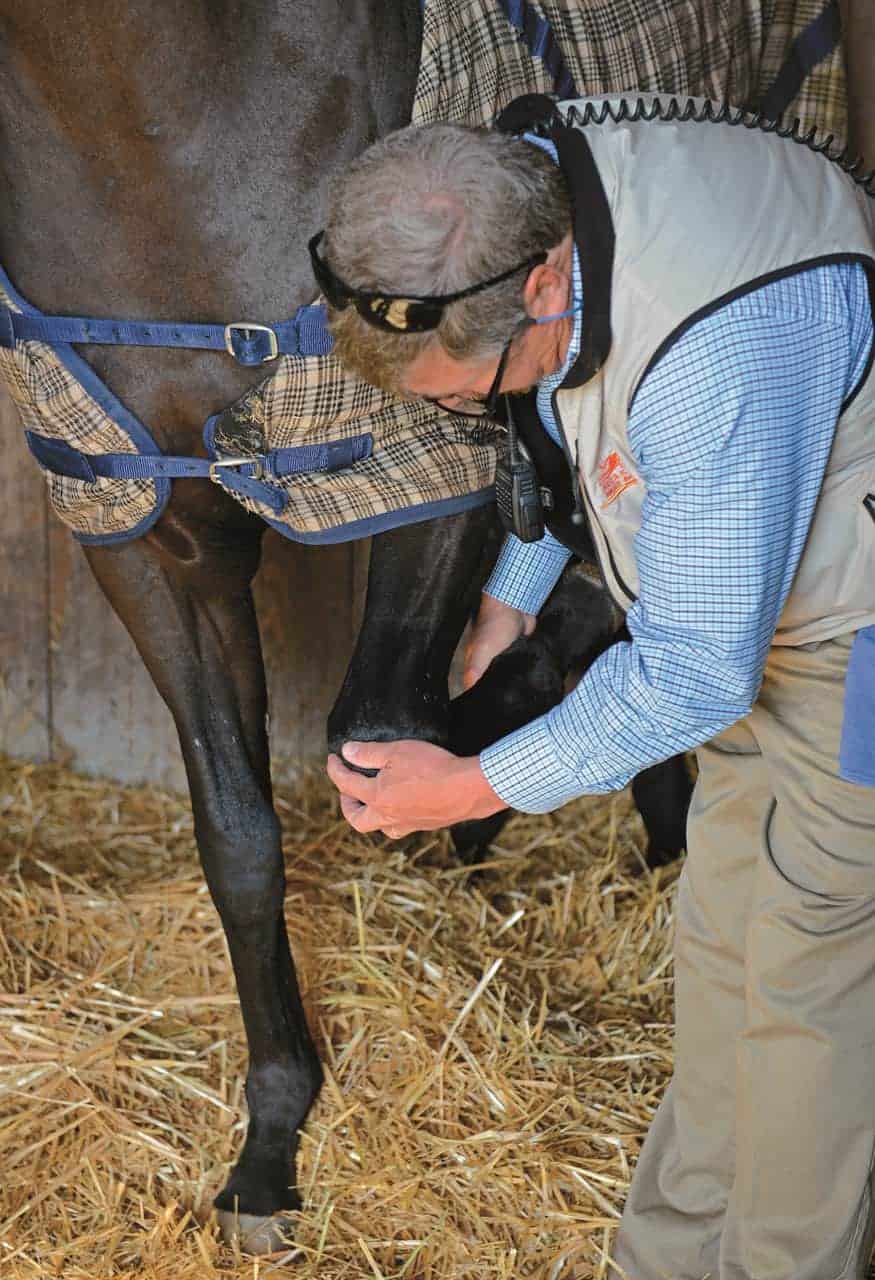Horse Knees: The Crooked, Chipped, and Inflamed

Up to 90% of lamenesses affecting horses’ front legs stem from bone and soft tissue found from the fetlock joint down. This doesn’t mean, however, that the other 10% of injuries occurring higher up aren’t serious. In fact, when they affect the complex knee (carpal) joints and surrounding soft tissues, they can compromise a horse’s long-term comfort and athletic performance.
Why complex? Horses’ knees, which are the equivalent to our wrists, are each made up of two rows of bones that flex in three different places—though markedly less in the bottom joint. Add to that stack of bones an extensive network of tendons and ligaments, and you have a sophisticated structure that’s crucial to the horse’s athleticism … and also one that’s susceptible to injury.
In this article we will review some equine knee problems owners and veterinarians encounter and how to manage them. We’ll start with those that horses are born with and move on to ones they can acquire TheHorse.com is home to thousands of free articles about horse health care. In order to access some of our exclusive free content, you must be signed into TheHorse.com. Already have an account?Create a free account with TheHorse.com to view this content.
Start your free account today!
and continue reading.

Written by:
Nancy S. Loving, DVM
Related Articles
Stay on top of the most recent Horse Health news with











